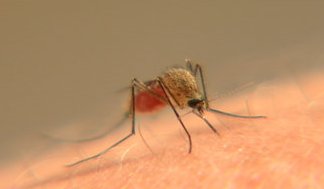Podcast: Play in new window
BOB HIRSHON (host):
Dodging deadly raindrops. I’m Bob Hirshon and this is Science Update.
To a mosquito, a falling raindrop packs the wallop that a moving car would have on a person. Yet the insects don’t die in rainstorms. Georgia Tech researchers developing mosquito-sized flying robots, want to know why. They’ve found that the insects’ light bodies roll under the drops without absorbing much force. The engineers hope to make their microrobots do the same.
In other news, researchers at the University of California at Santa Cruz are looking at the factors that determine how big insects get. 300 million years ago, some had wingspans over two feet across, thanks to high levels of oxygen. But they began getting smaller when the first insect-eating birds evolved, and smaller still with the advent of bats. The scientists conclude that while oxygen levels determine how big insects can get, hungry predators push them to become smaller and more maneuverable. I’m Bob Hirshon, for AAAS, the science society.


